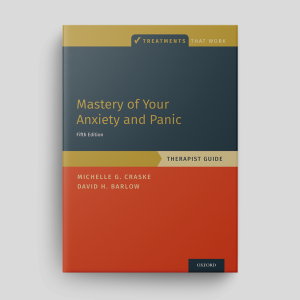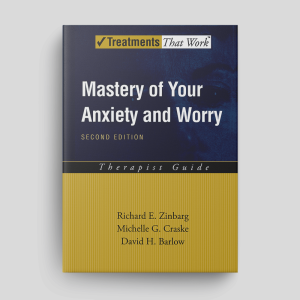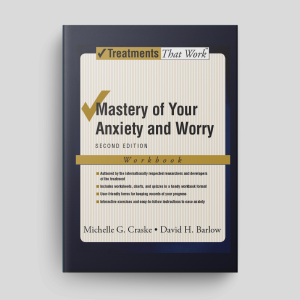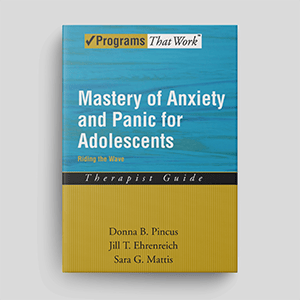Mastery Of Your Anxiety And Panic (Fifth Edition): Workbook
A structured cognitive behavioral therapy (CBT) program for individuals experiencing panic disorder and agoraphobia. This workbook supports clients as they work through an evidence-based program to understand and manage their panic attacks, reduce avoidance behaviors, and develop effective coping strategies.
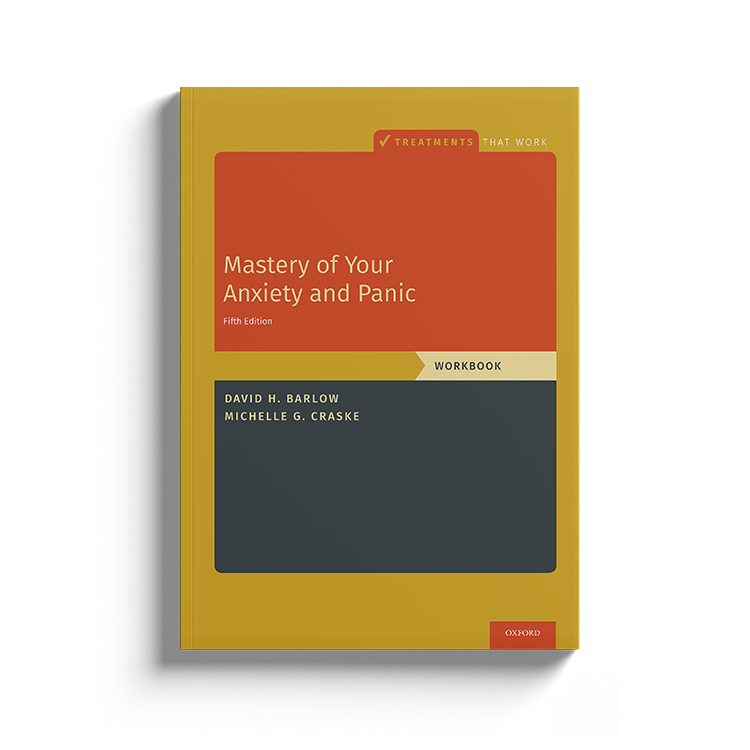
Download or send
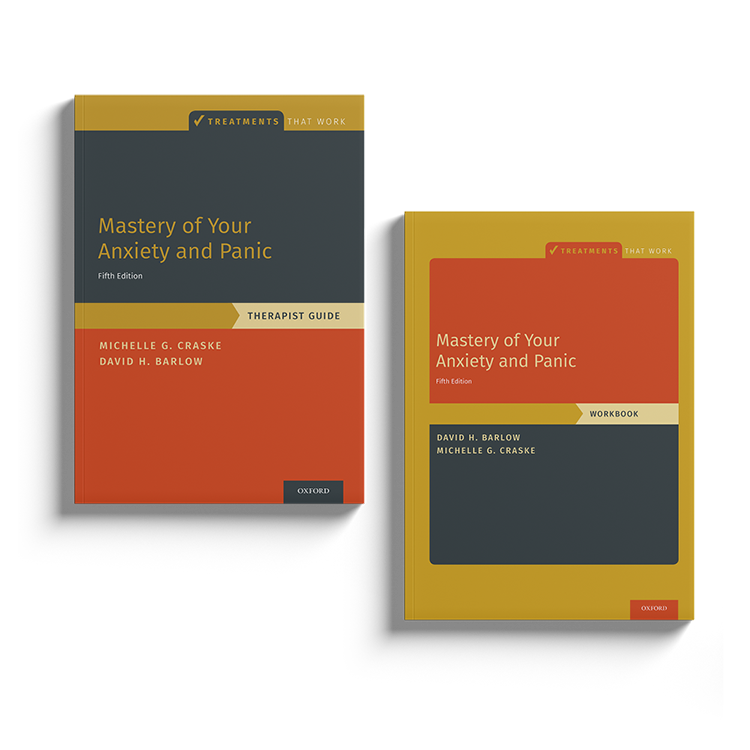
Overview
Panic disorder and agoraphobia can significantly impact an individual’s daily functioning and quality of life. The Mastery of Your Anxiety and Panic workbook is part of the Treatments That Work™ series and presents a well-established CBT program designed to help clients systematically reduce panic symptoms and avoidance behaviors. This structured, step-by-step guide is suitable for use in both individual and group therapy settings, supporting clinicians in delivering evidence-based treatment.
Through psychoeducation, cognitive restructuring, breathing skills, and graded exposure to feared sensations and situations, clients will learn how to break the cycle of panic and regain control. The workbook emphasizes inhibitory learning principles to enhance the effectiveness of exposure exercises.
Why use this resource?
The Mastery of Your Anxiety and Panic workbook provides a structured and clinically validated program that aligns with best practices in treating panic disorder and agoraphobia.
- Based on cutting-edge cognitive behavioral therapy (CBT) principles.
- Integrates inhibitory learning strategies to enhance exposure outcomes.
- Developed by leading experts in anxiety treatment.
- Includes worksheets and exercises to facilitate client engagement and progress tracking.
Key benefits
Structured
Evidence-Based
Practical
Flexible
What difficulties is this for?
Panic Disorder (PD)
Characterized by recurrent unexpected panic attacks and persistent worry about future attacks.
Panic Attacks
Acute episodes of intense anxiety marked by a rapid onset.
Agoraphobia
Marked by intense fear of situations where escape may be difficult.
Integrating it into your practice
Assessment
Identify client-specific panic triggers and avoidance patterns.
Psychoeducation
Teach clients about panic disorder, anxiety, and avoidance cycles.
Skills
Implement breathing and cognitive strategies to manage panic symptoms.
Exposure
Gradually reintroduce clients to feared situations and physical sensations.
Monitoring
Use structured worksheets to track progress and refine interventions.
Relapse Prevention
Equip clients with long-term strategies for maintaining gains.
Theoretical background and therapist guidance
This program is grounded in cognitive behavioral therapy (CBT), a well-established, evidence-based approach for anxiety disorders. It emphasizes cognitive restructuring to challenge catastrophic misinterpretations of bodily sensations and behavioral exposure to reduce avoidance.
Key principles include:
- Interoceptive exposure: clients confront feared bodily sensations (e.g., dizziness, heart palpitations) in a controlled manner to reduce fear responses.
- Situational exposure: gradual engagement with avoided situations to build tolerance.
- Cognitive restructuring: identifying and modifying maladaptive thought patterns associated with panic.
- Inhibitory learning model: focuses on developing new, non-threatening associations with anxiety-provoking stimuli to enhance exposure effectiveness.
Therapists are encouraged to use a collaborative and client-centered approach, tailoring interventions to individual client needs and pacing exposure exercises appropriately.
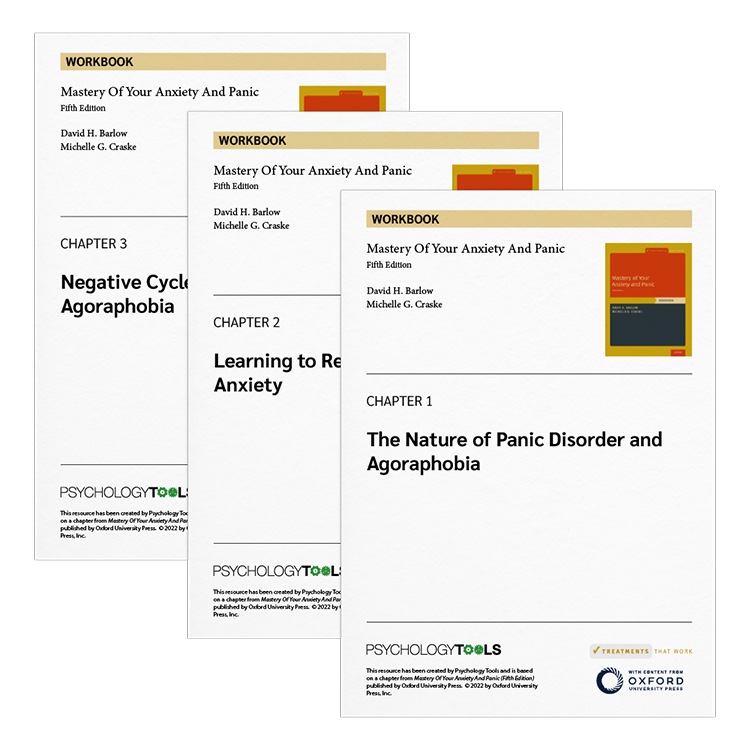
What's inside
- Comprehensive psychoeducation on panic disorder and agoraphobia.
- Guided worksheets for tracking panic attacks and avoidance behaviors.
- Breathing retraining and cognitive restructuring exercises.
- Step-by-step exposure therapy protocols.
- Strategies for relapse prevention and long-term maintenance.
FAQs
How this resource helps improve clinical outcomes
By incorporating this workbook into therapy, clinicians can:
- Enhance client understanding of panic disorder and agoraphobia.
- Facilitate structured and measurable progress.
- Improve treatment adherence through engaging exercises.
- Strengthen long-term relapse prevention strategies.
Clients benefit from:
- Reduced panic frequency and intensity.
- Increased confidence in managing anxiety symptoms.
- Greater willingness to engage in everyday activities.
- Lasting improvements in overall well-being.
Clinicians who use this resource also use
References and further reading
- Barlow, D. H., & Craske, M. G. (2022). Mastery of Your Anxiety and Panic: Workbook (5th ed.). Oxford University Press.
- Clark, D. M. (1999). Anxiety disorders: Why they persist and how to treat them. Behavior Research and Therapy, 37(Suppl 1), S5-S27.
- Salkovskis, P. M. (1991). The importance of behaviour in the maintenance of anxiety and panic: A cognitive account. Behavioural Psychotherapy, 19, 6–19.
- Wells, A. (2000). Emotional disorders and metacognition: Innovative cognitive therapy. Wiley.
Just enter your name and email address, and we'll send you Mastery Of Your Anxiety And Panic (Fifth Edition): Workbook (English US) straight to your inbox. You'll also receive occasional product update emails wth evidence-based tools, clinical resources, and the latest psychological research.
Product
Company
Support
- © 2025 Psychology Tools. All rights reserved
- Terms & Conditions
- Privacy Policy
- Cookies Policy
- Disclaimer
Working...
We value your privacy
This site uses strictly necessary cookies to function. We do not use cookies for analytics, marketing, or tracking purposes. By clicking “OK”, you agree to the use of these essential cookies. Read our Cookie Policy
